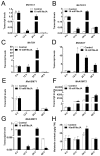Comparative Physiological Analysis of Methyl Jasmonate in the Delay of Postharvest Physiological Deterioration and Cell Oxidative Damage in Cassava
- PMID: 31492031
- PMCID: PMC6769660
- DOI: 10.3390/biom9090451
Comparative Physiological Analysis of Methyl Jasmonate in the Delay of Postharvest Physiological Deterioration and Cell Oxidative Damage in Cassava
Abstract
The short postharvest life of cassava is mainly due to its rapid postharvest physiological deterioration (PPD) and cell oxidative damage, however, how to effectively control this remains elusive. In this study, South China 5 cassava slices were sprayed with water and methyl jasmonate (MeJA) to study the effects of MeJA on reactive oxygen species, antioxidant enzymes, quality, endogenous hormone levels, and melatonin biosynthesis genes. We found that exogenous MeJA could delay the deterioration rate for at least 36 h and alleviate cell oxidative damage through activation of superoxide dismutase, catalase, and peroxidase. Moreover, MeJA increased the concentrations of melatonin and gibberellin during PPD, which had a significant effect on regulating PPD. Notably, exogenous MeJA had a significant effect on maintaining cassava quality, as evidenced by increased ascorbic acid content and carotenoid content. Taken together, MeJA treatment is an effective and promising way to maintain a long postharvest life, alleviate cell oxidative damage, and regulate storage quality in cassava.
Keywords: cassava; cell oxidative damage; methyl jasmonate; postharvest physiological deterioration; reactive oxygen species.
Conflict of interest statement
The authors declare no conflict of interest.
Figures







Similar articles
-
Profiling of acidic (amino and phenolic acids) and phenylpropanoids production in response to methyl jasmonate-induced oxidative stress in Scrophularia striata suspension cells.Planta. 2016 Jul;244(1):75-85. doi: 10.1007/s00425-016-2476-8. Epub 2016 Mar 5. Planta. 2016. PMID: 26945858
-
Combined seed and foliar pre-treatments with exogenous methyl jasmonate and salicylic acid mitigate drought-induced stress in maize.PLoS One. 2020 May 1;15(5):e0232269. doi: 10.1371/journal.pone.0232269. eCollection 2020. PLoS One. 2020. PMID: 32357181 Free PMC article.
-
Melatonin attenuates postharvest physiological deterioration of cassava storage roots.J Pineal Res. 2016 May;60(4):424-34. doi: 10.1111/jpi.12325. Epub 2016 Apr 2. J Pineal Res. 2016. PMID: 26989849
-
Effects of exogenous methyl jasmonate on quality and preservation of postharvest fruits: A review.Food Chem. 2021 Aug 15;353:129482. doi: 10.1016/j.foodchem.2021.129482. Epub 2021 Mar 6. Food Chem. 2021. PMID: 33725541 Review.
-
Application of methyl jasmonate to control chilling tolerance of postharvest fruit and vegetables: a meta-analysis and eliciting metabolism review.Crit Rev Food Sci Nutr. 2024;64(33):12878-12891. doi: 10.1080/10408398.2023.2258201. Epub 2023 Sep 13. Crit Rev Food Sci Nutr. 2024. PMID: 37702765 Review.
Cited by
-
Exogenous Application of Melatonin and Methyl Jasmonate as a Pre-Harvest Treatment Enhances Growth of Barhi Date Palm Trees, Prolongs Storability, and Maintains Quality of Their Fruits under Storage Conditions.Plants (Basel). 2021 Dec 29;11(1):96. doi: 10.3390/plants11010096. Plants (Basel). 2021. PMID: 35009099 Free PMC article.
-
Exogenous Melatonin Attenuates Post-Harvest Decay by Increasing Antioxidant Activity in Wax Apple (Syzygium samarangense).Front Plant Sci. 2020 Sep 11;11:569779. doi: 10.3389/fpls.2020.569779. eCollection 2020. Front Plant Sci. 2020. PMID: 33042186 Free PMC article.
-
Jasmonate and Melatonin Act Synergistically to Potentiate Cold Tolerance in Tomato Plants.Front Plant Sci. 2022 Jan 7;12:763284. doi: 10.3389/fpls.2021.763284. eCollection 2021. Front Plant Sci. 2022. PMID: 35069620 Free PMC article.
-
Reactive oxygen species turnover, phenolics metabolism, and some key gene expressions modulate postharvest physiological deterioration in cassava tubers.Front Microbiol. 2023 Feb 28;14:1148464. doi: 10.3389/fmicb.2023.1148464. eCollection 2023. Front Microbiol. 2023. PMID: 36925477 Free PMC article.
References
-
- Morante N., Sánchez T., Ceballos H., Calle F., Pérez J.C., Egesi C., Cuambe C.E., Escobar A., Ortiz D., Chávez A.L., et al. Tolerance to postharvest physiological deterioration in cassava roots. Crop Sci. 2010;50:1333–1338. doi: 10.2135/cropsci2009.11.0666. - DOI
-
- Iyer S., Mattinson D.S., Fellman J.K. Study of the early events leading to cassavaroot postharvest deterioration. Trop. Plant Biol. 2010;3:151–165. doi: 10.1007/s12042-010-9052-3. - DOI
-
- Buschmann H., Rodriguez M.X., Tohme J., Beeching J.R. Accumulation of hydroxycoumarins during post-harvest deterioration of tuberous roots of cassava (Manihot esculenta crantz) Ann. Bot-London. 2000;86:1153–1160. doi: 10.1006/anbo.2000.1285. - DOI
-
- Salcedo A., Siritunga D. Insights into the physiological, biochemical and molecular basis of postharvest deterioration in cassava (Manihot esculenta) roots. Am. J. Exp. Agric. 2011;1:414–431. doi: 10.9734/AJEA/2011/784. - DOI
-
- Saravanan R., Ravi V., Stephen R., Thajudhin S., George J. Post-harvest physiological deterioration of cassava (Manihot esculenta) - A review. Indian J. Agr. Sci. 2016;86:1383–1390.
Publication types
MeSH terms
Substances
LinkOut - more resources
Full Text Sources

